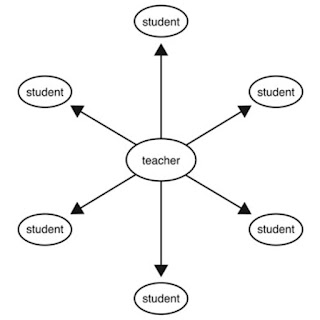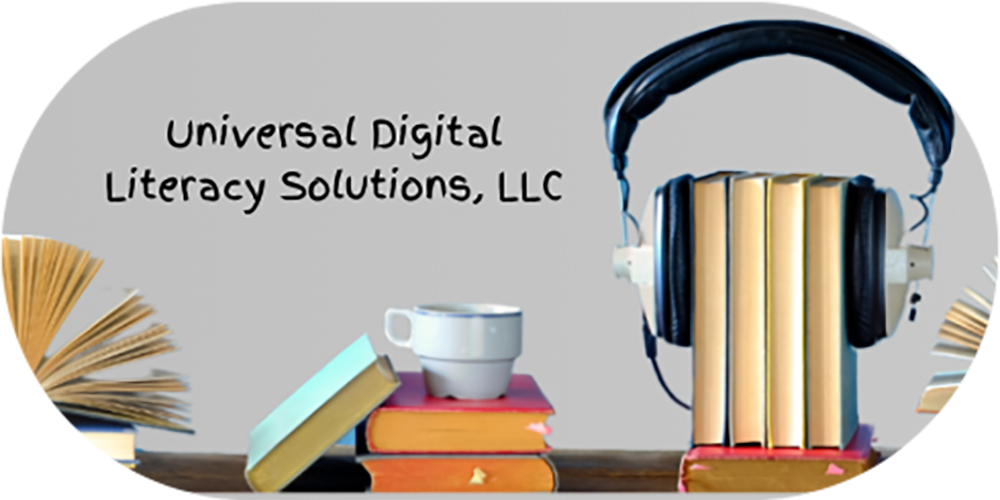Invisible Literacies Series: 2nd in Series
August 23, 2022 ~ Mary Pettit, NBCT, Ed.D
Note: This is the 2nd post in a new “Invisible Literacies” series. In the 1st post I defined invisible literacies and the dangers of practicing this inequitable framework in classrooms. In this 2nd post, I will define and explain how a multiliteracies framework using a multimodal approach is essential pedagogical practice to breaking down the barriers that have historically been constructed by allowing literacies to remain invisible in our classrooms. Finally, the third post in this series will be dedicated to educators who have implemented best practices in their classrooms and embrace and acknowledge multiliteracies so that all students have equitable access and opportunities to learn. My goal is to provide a clear and concise definition of invisible literacies so that we can start with equitable learning goals for all students while envisioning and devising a sound pedagogy that follows a roadmap leading to the hidden treasure: EQUITY IN LEARNING.

The roadmap to a multiliterate, culturally responsive classrooms begin with the belief that all students have different literacy abilities. As educators it is our job to ensure that when our students walk through our classroom doors, they feel a sense of belonging. Adopting a pedagogical framework that fosters this culture of community is essential to achieving this mindset.
Pedagogy: Appropriate and purposeful instructional choices from a repertoire (Cope & Kalantzis, 2009)
Multiliteracies Roadmap
Multiliteracies theory depends on two major aspects of language use today (The New London Group, 1996)
1) Variability – meaning making in different cultural, social, or domain specific contexts
2) Multi-Modality – meaning making particularly evident today in digital information and communicative media
Pedagogical harmony exists when the educator understands that socioeconomic background plays a large part on the transference of knowledge. Curriculum, (what we teach) has very little effect on learning outcome (Cope & Kalantzis, 2009). In other words, what we teach and what curriculum or program we use to teach will not matter if the educator doesn’t translate or transfer learning in a culturally responsive manner.
These pedagogical orientations or knowledge processes are not a pedagogy in singular or a sequence to be followed. Rather, they are a map of the range of pedological moves that may prompt teachers to extend their pedagogical repertoires
New London Group (1996)
Multi-Modality

Multimodality is a feature of meaning making in our times and into the future.
Domains of Multi-modal Literacy:
- Audio
- Oral
- Written
- Visual
- Spatial
- Tactile
- Gestural

Assessment
The challenge for educators is how shift their pedagogical practice using this approach and assess student learning.
*If multimodality is a feature of meaning making in our times and into the future, how do they impact across all domains? How do learners engage with various domains?
The answer is simple at its core: Assessments are meaningful when the assessor’s choice is purposeful. According to the Learning by Design pedagogy (Cope & Kalantzis, 2015), traditional pedagogy relies on an assessment of learning in the form of testing or the ability to name what has been taught. In a situated practice experience or progressive pedagogy, educators begin where learners are and find the way they learn best.
A single mark of performance at the end is never enough to tell you whether anything has changed.
Cope & Kalantzis (2009)
Historically, we have used textbooks “to tell” or summarize the world. This is monological. One way to transition to a multi-modal approach to literacy is to curate the world. This is dialogical or interactive. Out with the monological framework. It’s time to create online communities, discussion boards, and digital assessments.
Historically, traditional discourse looked like this: (Cazden et al., 1996)
Teacher Initiates Discourse
Teacher: What was the cause of the Boston Tea Party?
Student responds
Student: Unfair Taxes
Teacher evaluates
Teacher: Correct/Incorrect
Using a multiliteracies framework educators prepare learners to be citizens, learners, and workers in a new digital age (The New London Group, 1996). Students can no longer sit at their desks staring at their textbooks or at their chrome books. Using this pedagogy, students do not interact with each other or their learning environment. Using the creative space and a multi-modal approach it is understood that meaningful classroom discourse takes place when students feel a sense of community belonging. Yes, relationships really do matter. I attended a new teacher orientation today for the incoming teachers in my district. The assistant superintendent said something that resonated with me.
There is a huge difference between kids who feel like they “fit in” and kids who feel like they “belong”.
Elizabeth Doyle, Assistant Superintendent for Curriculum and Instruction, South Country School District
Fitting in requires that you change something about yourself for others to accept your membership in a community. Belonging is being accepted for who you are…all of who you are.
The “HIDDEN” truth:
High stakes testing keeps inequality hidden and continuous. We need to harness the tools to prepare students to be citizens, learners, and workers.
Kalantzis & Cope (2015)
This shift in pedagogical practice requires a collaborative effort between all stakeholders at the grassroots level. We can no longer use standard measurements to measure extraordinary kids.

Didactic Pedagogy: A strategy of presenting knowledge, information, and ideas to students in a structurally organized way.
Didactic Learning, from E-Learning Ecologies, Kalantzis and Cope (2017)
Shift to Reflective Pedagogy:

The most effective impact on education can be observed at the grassroots level, within a classroom community. Educators and educational leaders who value the benefits of collaboration at the grassroots level have the ability to cultivate powerful pedagogical practices and equitable learning opportunities for all students.
Mary Pettit, Ed.D, Universal Digital Literacy Solutions, LLC


Leave a comment